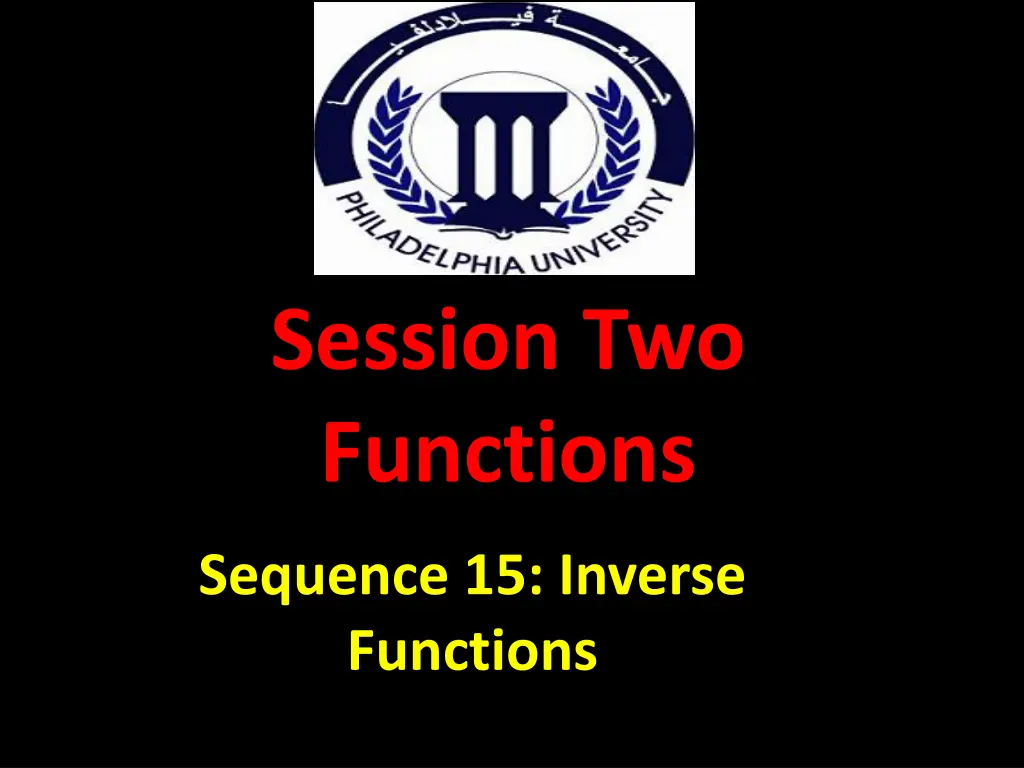
Understanding Inverse Functions in Mathematics
Learn about inverse functions in mathematics, including their definition, examples, and how to determine if a function is one-to-one. Discover the Horizontal Line Test and the concept of inverse functions for one-to-one functions.
Download Presentation

Please find below an Image/Link to download the presentation.
The content on the website is provided AS IS for your information and personal use only. It may not be sold, licensed, or shared on other websites without obtaining consent from the author. If you encounter any issues during the download, it is possible that the publisher has removed the file from their server.
You are allowed to download the files provided on this website for personal or commercial use, subject to the condition that they are used lawfully. All files are the property of their respective owners.
The content on the website is provided AS IS for your information and personal use only. It may not be sold, licensed, or shared on other websites without obtaining consent from the author.
E N D
Presentation Transcript
Session Two Functions Sequence 15: Inverse Functions
Sequence 15: Inverse Functions Remember that, a function can be represented by a set of ordered pairs. For instance, the function ? ? = ? + ? rom the set ? = {?,?,?,?} to the set ? = {?,?,?,?} can be written as follows. ? ? = ? + ? { ?,? , ?,? , ?,? , ?,? } In this case, by interchanging the first and second coordinates of each of these ordered pairs, you can form the inverse function of ?, which is denoted by ? ?.
Sequence 15: Inverse Functions ? ?is a function from the set ? to the set ? , and can be written as follows. ? ?? = ? + ? { ?,? , ?,? , ?,? , ?,? } Note that the domain of ? is equal to the range of ? ?, and vice versa. Also note that the functions ? and ? ?have the effect of "undoing" each other. In other words, when you form the composition of ? with ? ?or the composition of ? with ? ?, you obtain the identity function ?. ? ? ?? = ? ? ? = ? ? + ? = ? ? ?? ? = ? ?? ? = ? + ? ? = ?
Sequence 15: Inverse Functions Definition: A function is called a one-to-one function if it never takes on the same value twice; that is, ?(??) ?(??) whenever ?? ??. We have the following geometric method for determining whether a function is one-to-one. Horizontal Line Test: A function is one-to-one if and only if no horizontal line intersects its graph more than once.
Sequence 15: Inverse Functions Example: Is the function ? ? = ??one-to-one? Solution: If ?? ??, then ?? numbers can t have the same cube). Therefore, ? ? = ??is one-to-one. From the figure below we see that no horizontal line intersects the graph of ? ? = ??more than once. Therefore, by the Horizontal Line Test, ? is one-to-one. ? ?? ?(two different
Sequence 15: Inverse Functions Example: Is the function ? ? = ??one-to-one? Solution: This function is not one-to-one because, for instance, ? ? = ? = ?( ?) and so ? and ? have the same output. From the figure below we see that there are horizontal lines that intersect the graph of ? more than once. Therefore, by the Horizontal Line Test, ? is not one- to-one.
Sequence 15: Inverse Functions Not all functions possess inverses. Only function that has the one-to-one property has inverse function according to the following definition. Definition: Let ? be a one-to-one function with domain ? and range ? . Then its inverse function ? ?has domain ? and range ? and is defined by ? ?? = ? ? ? = ? for any ? ?. By this definition we get the following cancelation equations: ? ?? ? = ? for every ? ? ? ? ?? = ? for every ? ? .
Sequence 15: Inverse Functions How To Find The Inverse Function Of A One-To-One Function ?: 1. Write ? = ?(?) . 2. Solve this equation for ? in terms of ? (if possible). 3. To express ? ?as a function of ? , interchange ? and ? . The resulting equation is ? = ? ?(?) .
Sequence 15: Inverse Functions Example: Find the inverse function of ? ? = ??+ ? Solution: Note that ? ? = ??+ ? is one-to-one function. According to the previous algorithm, first we write ? = ??+ ? . Then we solve this equation for ? : ??= ? ? ?? ? ? = Finally, we interchange ? and ? ?? ? = ? ?(?) ? =
